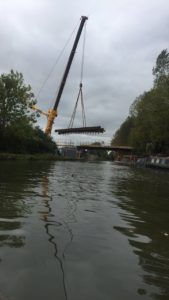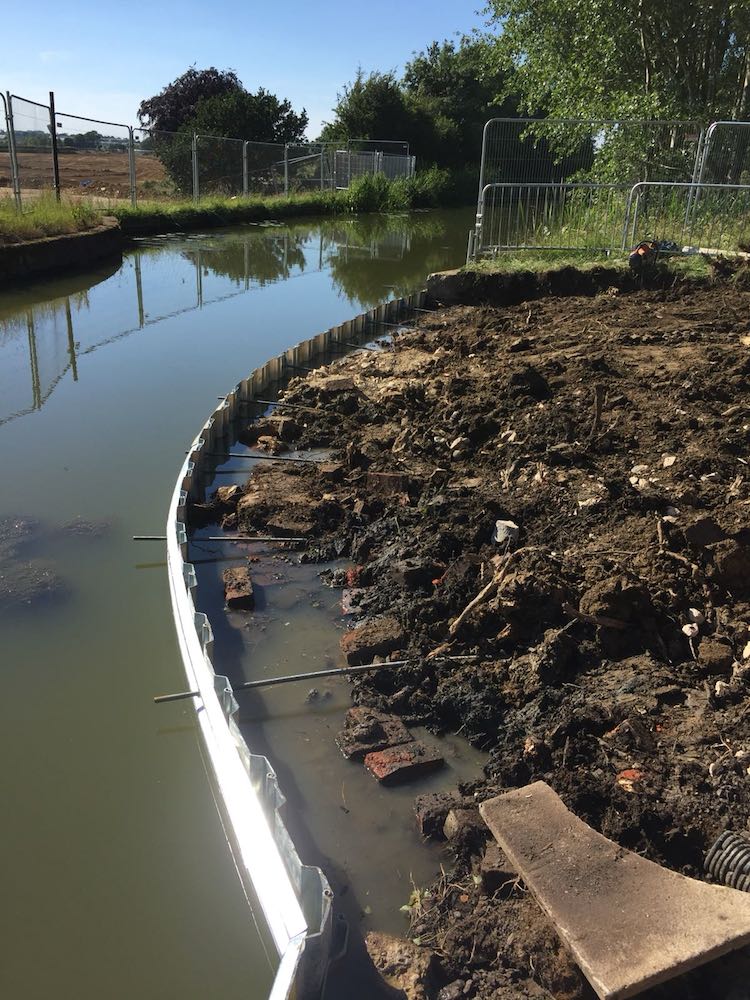 The town of Market Harborough has recently been named the best place to live in the UK, so it is perhaps unsurprising that there has been significant investment in the surrounding infrastructure. Part of this involved a multi-million-pound housing and leisure development at Airfield Farm, in order to support the town’s rapid expansion. The Rothen Group, a national independent civil engineering and maintenance business, was chosen to undertake works to facilitate the creation of a new road bridge – ultimately opening up the new housing site to the local community.
The town of Market Harborough has recently been named the best place to live in the UK, so it is perhaps unsurprising that there has been significant investment in the surrounding infrastructure. Part of this involved a multi-million-pound housing and leisure development at Airfield Farm, in order to support the town’s rapid expansion. The Rothen Group, a national independent civil engineering and maintenance business, was chosen to undertake works to facilitate the creation of a new road bridge – ultimately opening up the new housing site to the local community.
The town of Market Harborough has always been popular with commuters travelling to London due to its handy, yet rural location. Realising its potential, the 140-acre Airfield Farm, a former RAF MH airbase, was selected for the creation of a new development site that would consist of 924 new homes being built, as well as a local shopping precinct, health care centre, primary school, canal marina with a hotel, country park, sports fields and allotments.
In order to make this significant development a reality, a new road bridge needed to be constructed over the Grand Union canal – crucially, connecting Airfield Farm to the rest of the town. Given the narrow canals there one of the first tasks was to strengthen and stabilise the bank on both sides.
Building Bridges
Civil Engineering firm, Breheny, called upon the specialist skills of The Rothen Group to assist with the bank stabilisation works for the two sides of the new bridge over Grand Union Canal.
Simon Andrews, Senior Project Manager at Breheny, explained: “We approached The Rothen Group due to the specialist nature of the works required. We needed to work with experts who could provide solutions to a set of challenges, including overcoming the narrow environment of the canal. The Rothen Group had trained operatives, and the unique plant and machinery equipment needed to stabilise and complete piling works in preparation for building the new bridge.”
The Solution
Following an on-site safety and work assessment with Breheny, The Rothen Group specified one of its marine-ready excavators, as well as vibratory and air pilling hammers to complete the works. All equipment was able to be used and positioned from the side of the bank in order to lessen the impact of the narrow canal, and ensure little disruption to passing pleasure boats.
Given that the bridge would serve as a gateway to the large housing and infrastructure development for many years to come, the structure of the walls had to be secure enough to bear such weight. To offer maximum stability, The Rothen Group worked with Breheny to supply sheet pile anchor ties set to specific levels to ensure they sat directly under the new bridge abutment. This technique enables greater retained heights to be viable for a project such as this.
Ian Rothen, Founder of The Rothen Group, said: “This project had a number of logistical, safety and bridge load bearing concerns, so it was imperative for us to work closely with Breheny and use our extensive knowledge of the canal environment to provide practical solutions to overcome the presented issues. Floating plant was not an option in this instance given the narrow nature of the canal, which is why we needed to do piling works from the bankside instead.
Ian, continued: “While we do offer a hire service for self-operation, our team of trained operatives took the pressure of the Breheny team and as a result we were able to complete the works within the specified five-week timeframe to the highest safety standards.”

Successful Completion
Since the completion of the sheet pilling works, the bridge was successfully built allowing for the housing development to commence. The new Market Harborough bridge will unlock land for hundreds of new homes and show homes – with solid foundations, the bridge is a symbol of growth for this humble commuter town and its expanding community.
Simon, concluded: “We are delighted that the Rothen Group could help us with this important project and provide timely solutions to the very specific site requirements and challenges we had. Importantly no delays or errors occurred throughout the entirety of the project which meant we kept to schedule too.”









